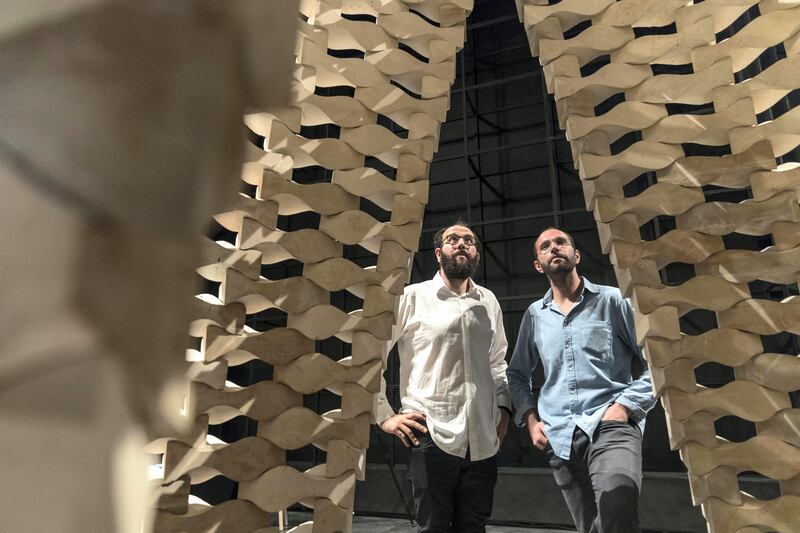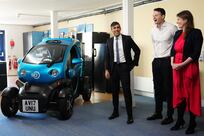Located at the border between Jerusalem and Bethlehem, the steep Cremisan Valley sits between the West Bank Palestinian community of Beit Jala and the newer Israeli settlement of Gilo.
Excavations among its terraces and nearby communities reveal a history of human occupation and olive growing since at least the Roman period, and in the 19th century, the valley became famous for wine production and for the Catholic monastery that still sits on one of its peaks.
Now, most of the Cremisan’s ancient terraces lie untended. Since 2015, the valley has become the site of a new stretch of Israel’s separation barrier, a 12-metre-high concrete wall that bisects the valley, separating communities and effectively annexing land that was once deemed part of Bethlehem but now falls within Jerusalem’s orbit.
In 2015, the valley appeared to have been spared; after campaigns by local groups, international lobbying by the Vatican and visits by EU delegations and bishops from the episcopal conferences of Europe and North America, Israel's top court blocked the controversial extension.
Only months later however, construction started. Many of the Cremisan’s ancient olive groves were destroyed and the wall began to make its way down the valley’s slopes, forming a physical barrier not only dividing communities but separating 58 Palestinian families from their land.
Israeli authorities claim the purpose of the wall is to stop and prevent acts of terrorism – sniper fire and mortar shells were fired from Beit Jala towards Gilo during the early years of the Intifada – but critics claim the wall is designed to accelerate the expropriation of Palestinian land. Either way, life in the Cremisan is in the process of changing forever and the future for the ancient landscape looks bleak.
However, thanks to a unique installation that has opened at Alserkal Avenue's Concrete exhibition space in Dubai, visitors now have a chance to experience the Cremisan. While We Wait is a collaborative installation that combines experimental architecture with words, sounds and images to startling effect.
It consists of stills and a film by Mikaela Burstow, a soundscape by the Palestinian musician Tareq Abboushi and a text by Karim Kattan, founder and director of the el-Atlal artist and writers' residency in Jericho, all of which respond to the Cremisan and to a stone tower, the latest work by the Bethlehem and Paris-based architectural practice AAU Anastas. Originally constructed for the 2017 London Design Festival in September, While We Wait was commissioned by Salma Tuqan, the Victoria and Albert Museum's curator of Middle Eastern contemporary art and design.
“The Middle East is a region where design is constantly trying to clamour for understanding, where there are very few opportunities for designers to work with the public and to have the public engage with their work in more of a public setting on a more conceptual level, free from the commercial pressures that many designers in the region face,” says the curator. “We still have a way to go in terms of reinserting Arab art and design into the canon, but what I’ve noticed with Arab designers is that there are far fewer opportunities in terms of exhibiting but also in terms of patronage.”
As with earlier AAU Anastas projects, While We Wait combines limestone, the archetypal Palestinian building material, with computer-controlled design and construction techniques, to produce a pavilion that explores new possibilities for stone's use as a structural element in contemporary architecture, while also reflecting on Palestine's history and heritage.
While We Wait not only stands as testament to the Cremisan's despoliation, but operates as a quiet act of resistance to the separation wall and to what the architects describe as "culture's claim over nature".
“The Cremisan is one of Palestine’s most beautiful landscapes but at the same time we all know that it will soon cease to exist. It will disappear,” says Yousef Anastas, who established AAU Anastas with his brother, Elias.
“We are trying to raise awareness of the relationship between architecture and landscape in the Palestinian context, but at the same time this an entirely generic question because situations like the one in the Cremisan Valley exist all over the world.”
Inspired in part by the small stone structures once used to define property ownership in the Palestinian landscape, While We Wait also responds to efforts by Cremisan's community to oppose the destruction of their way of life.
“Around three or four years ago, the monks from the monastery and the local community started having Friday gatherings. Initially they were religious gatherings but over time they became increasingly meditative and also began to protest against the passage of the wall,” says Elias Anastas.
“We found these gatherings very strong and we somehow wanted to memorialise them in a way that would also suggest new ways investigating the landscape.”
The result is a tower composed of more than 500 modules of Palestinian limestone that is not only entirely self-supporting but also lattice-like and light enough to blend in with the landscape in the Cremisan, which is where it will eventually be erected after it leaves Dubai.
The fact that it requires no foundations and has no roof also allows While We Wait to evade the strict restrictions placed on building in the West Bank because it is not legally considered to be a construction. "This exhibition is trying to draw attention to the area, not to focus exclusively on architecture or on our work, but to place emphasis on an area that could very easily be inscribed on the Unesco World Heritage list," Elias Anastas adds, describing the structure as an architecture of relationships. "There is the valley, the monastery and the community – several components that come together – and somehow the structure is about an architecture of relationships. If you remove one brick, the whole structure will collapse and we wanted to reflect on these relationships in the valley."
When it finally arrives in the place that inspired it, While We Wait will become a silent sentinel in the landscape and a focus, its designer's hope, for reflection and community engagement.
In the meantime, Alserkal Avenue has been graced with an installation that not only makes the OMA-designed Concrete look great, but offers inspiration to architects and designers working locally. Pity Alserkal's programmers. Improving on While We Wait will not be easy.
While We Wait by Elias and Yousef Anastas runs at Concrete, Alserkal Avenue, until November 18. For details, visit www.alserkalavenue.ae
______________
Read more:
[ Architectural Biennale: what's your favourite Dubai building and why? ]
[ Britain marks Balfour centenary amid Palestinian protests ]
[ How Dubai's Alserkal Avenue is changing the way we think about architecture ]
______________





